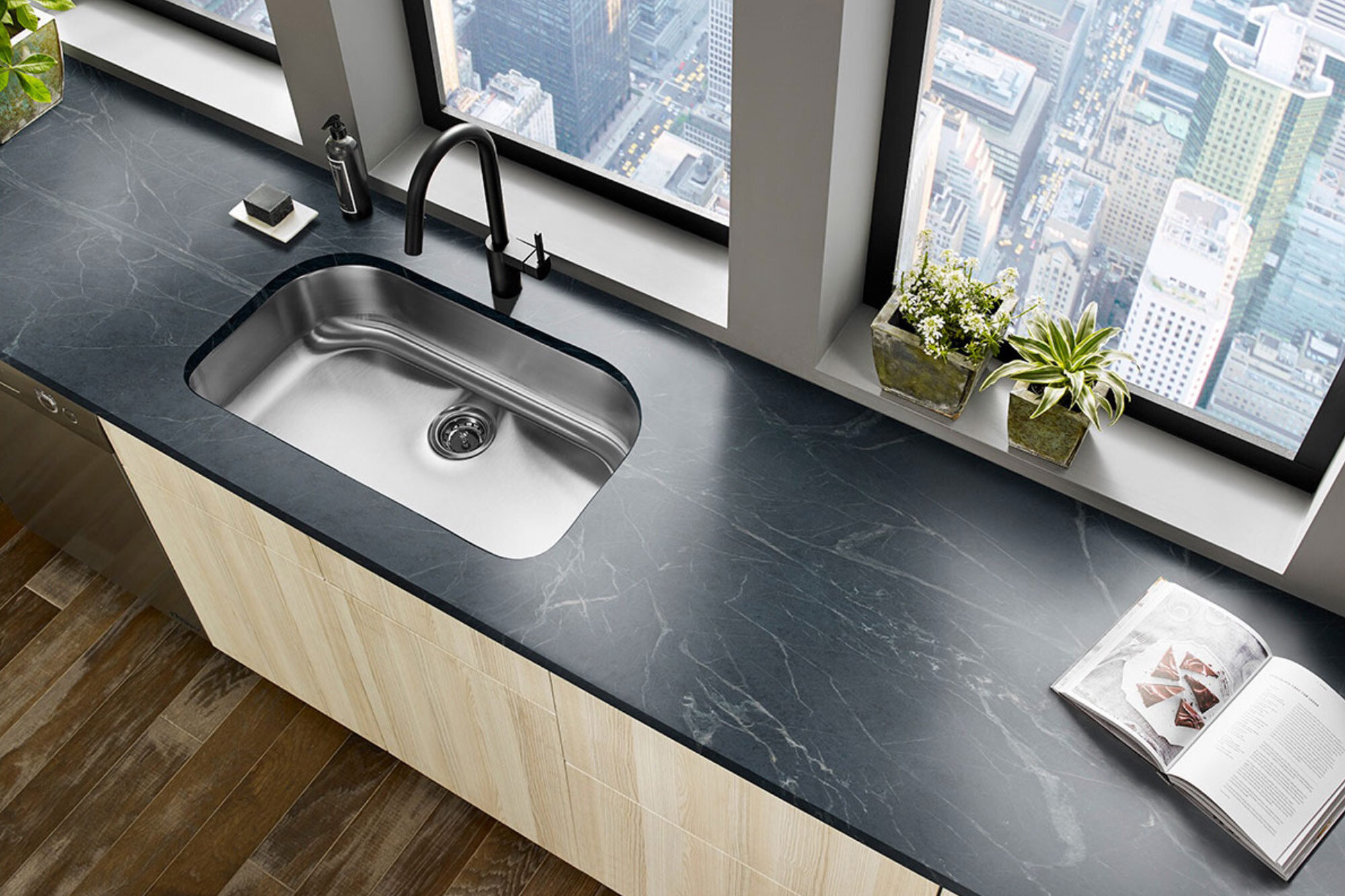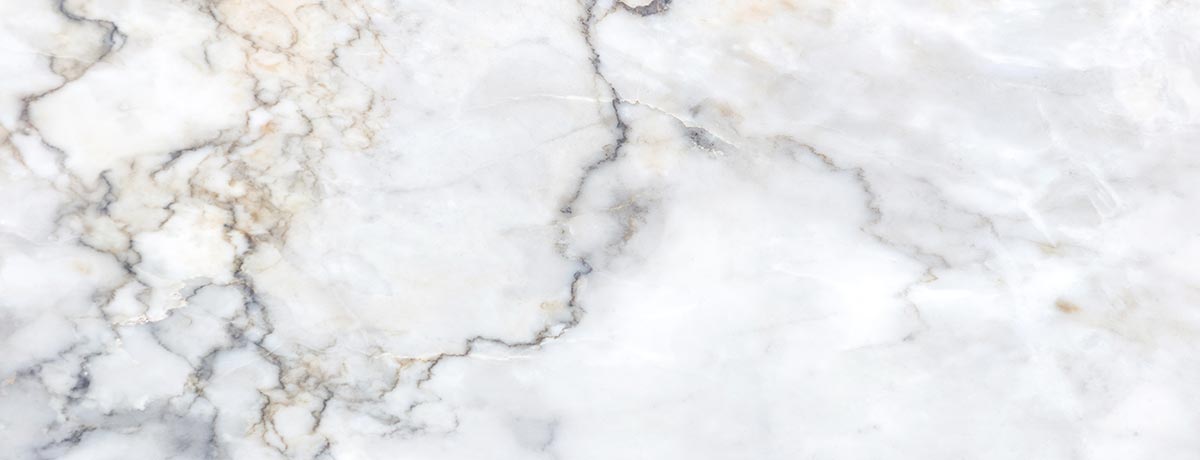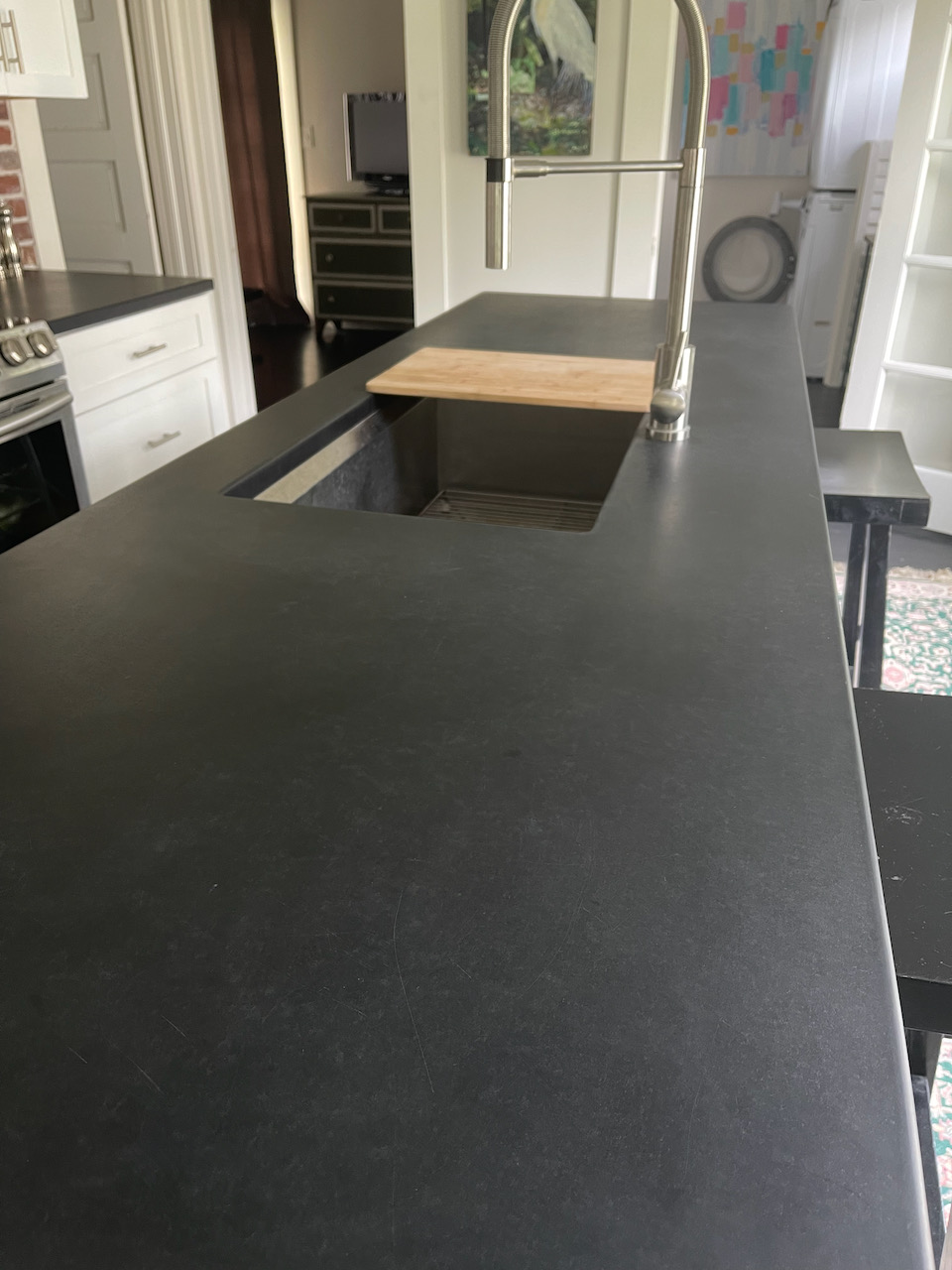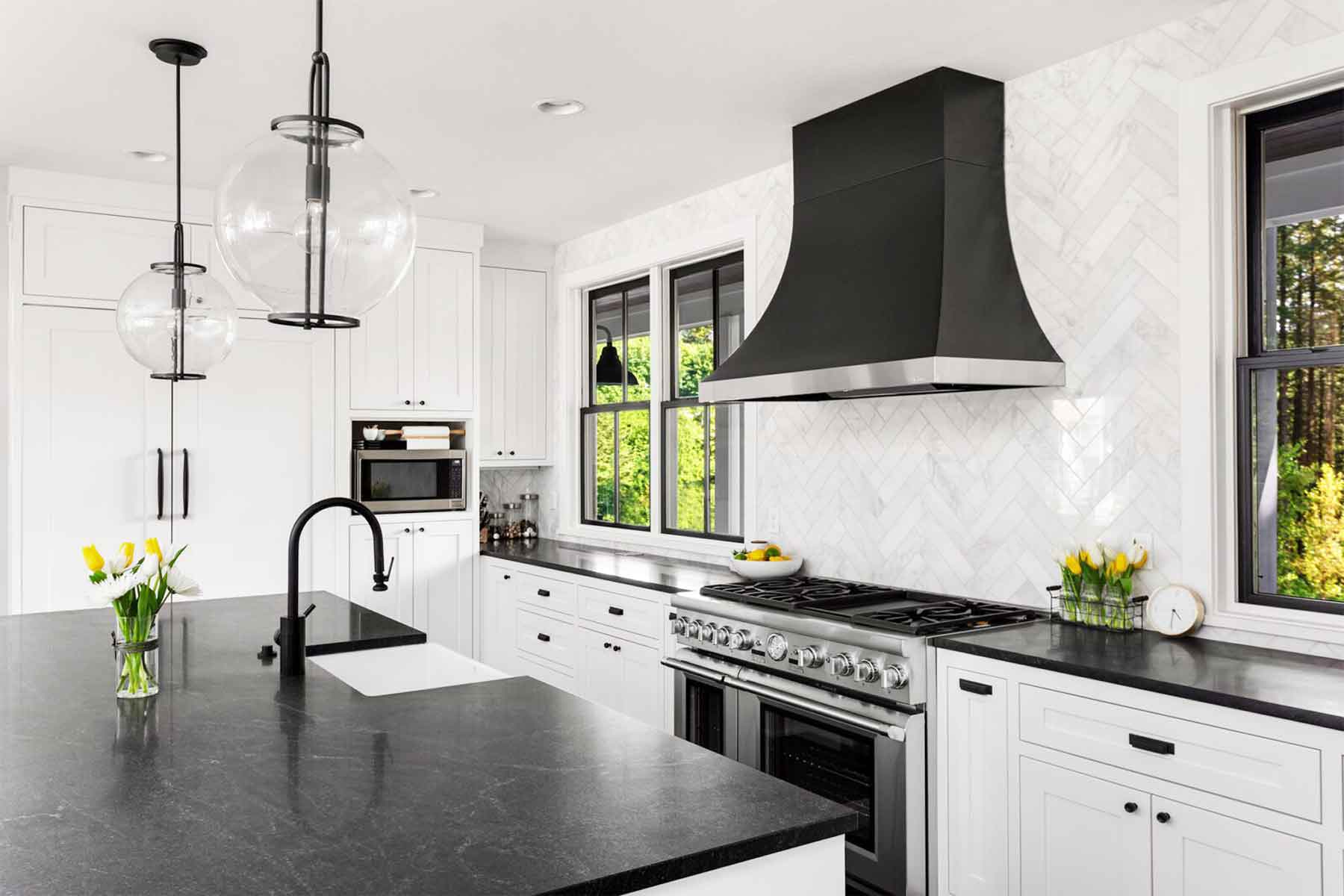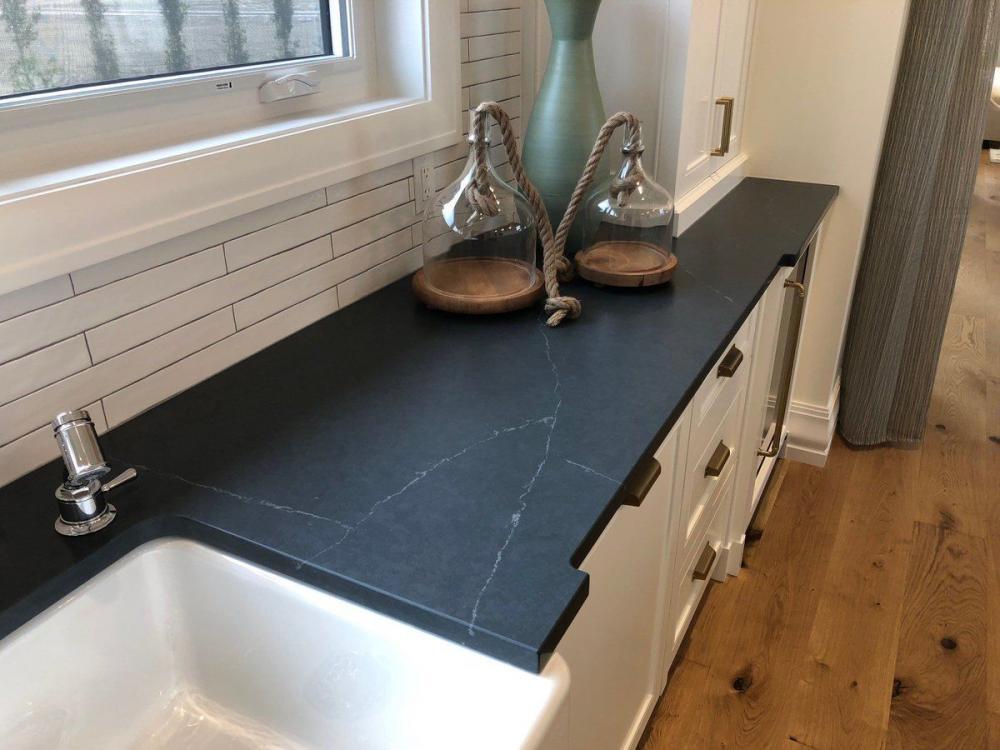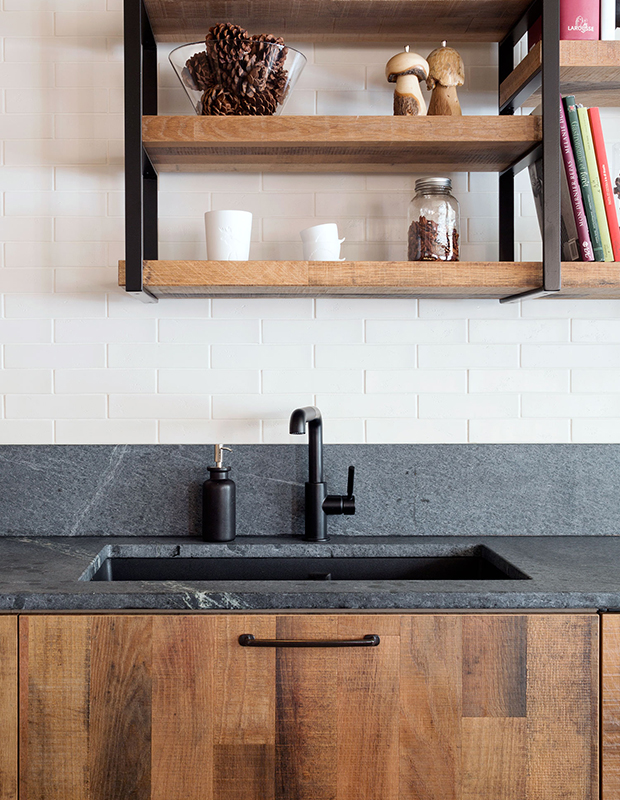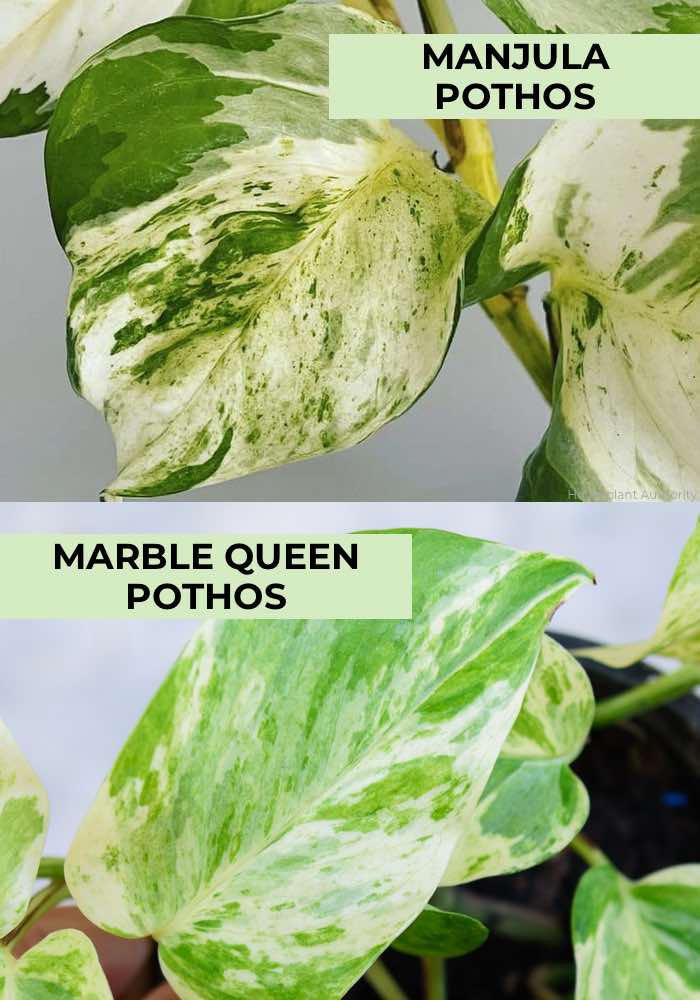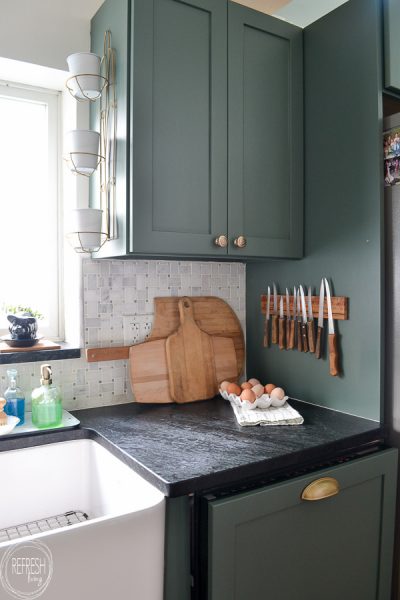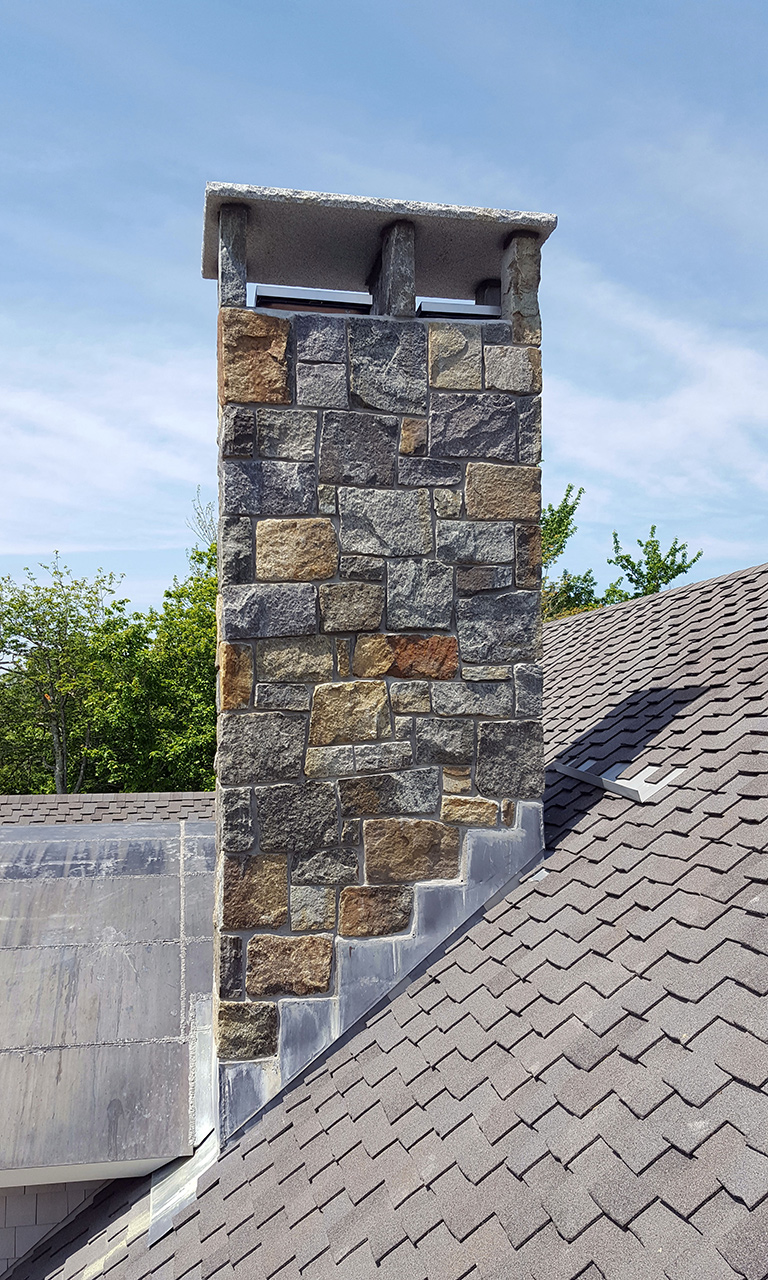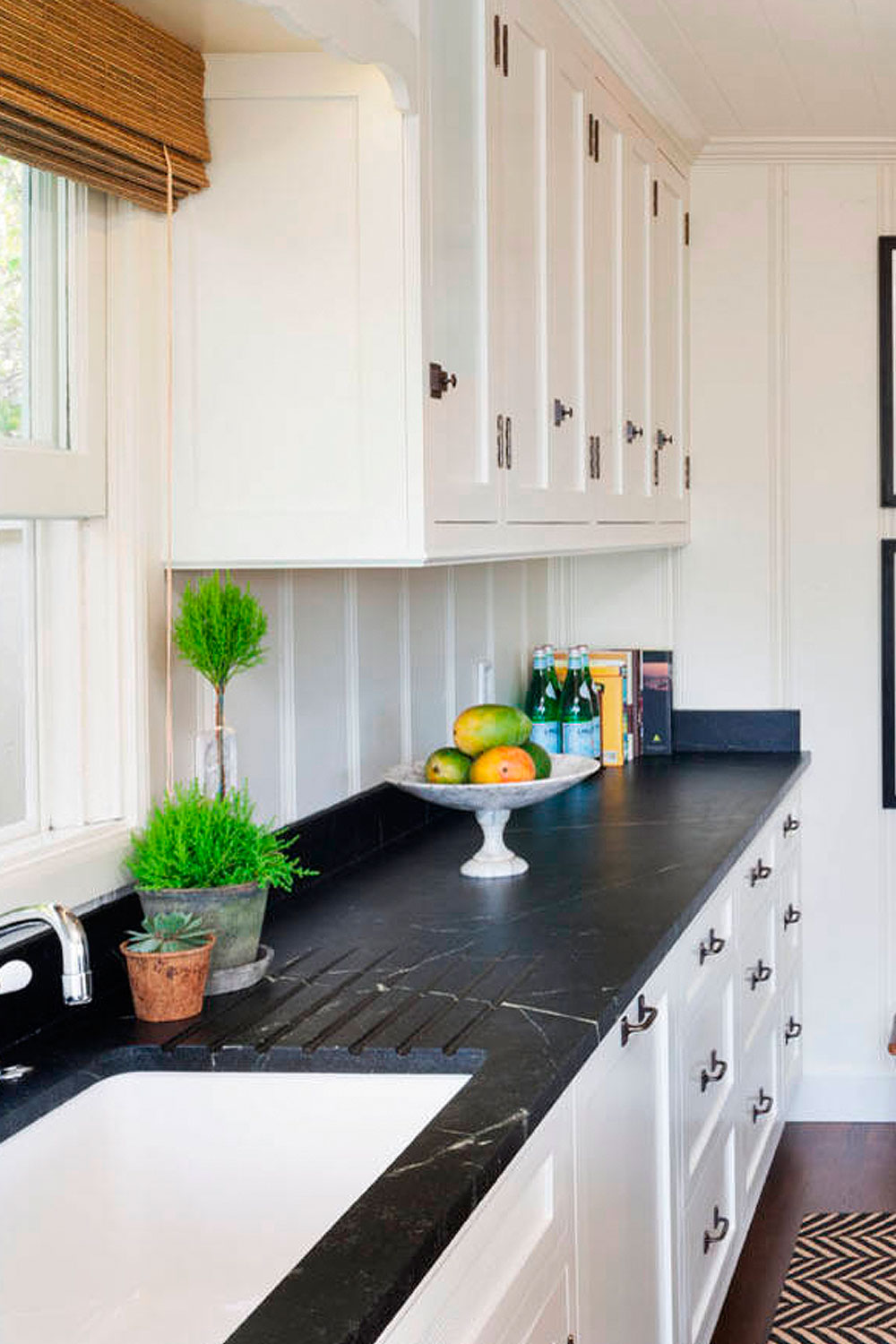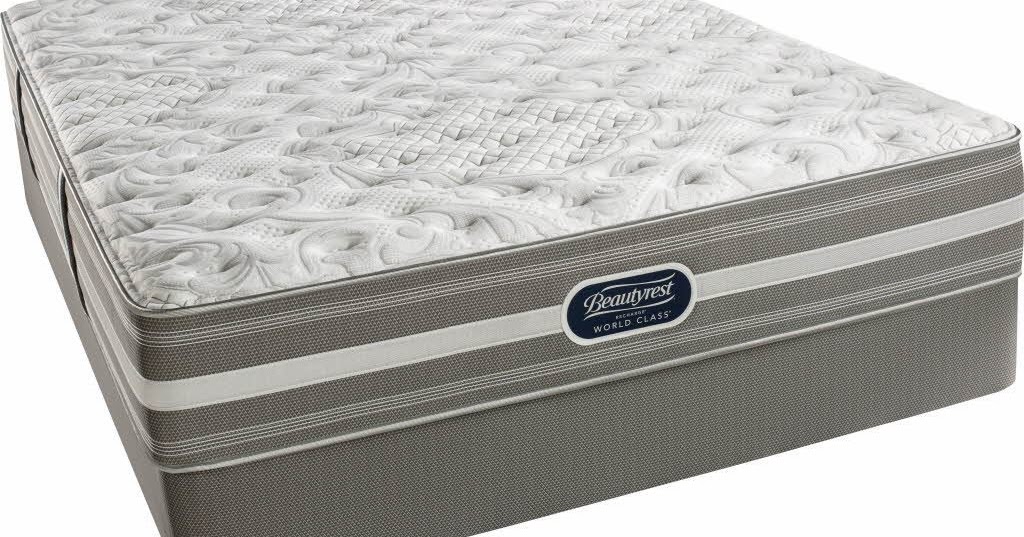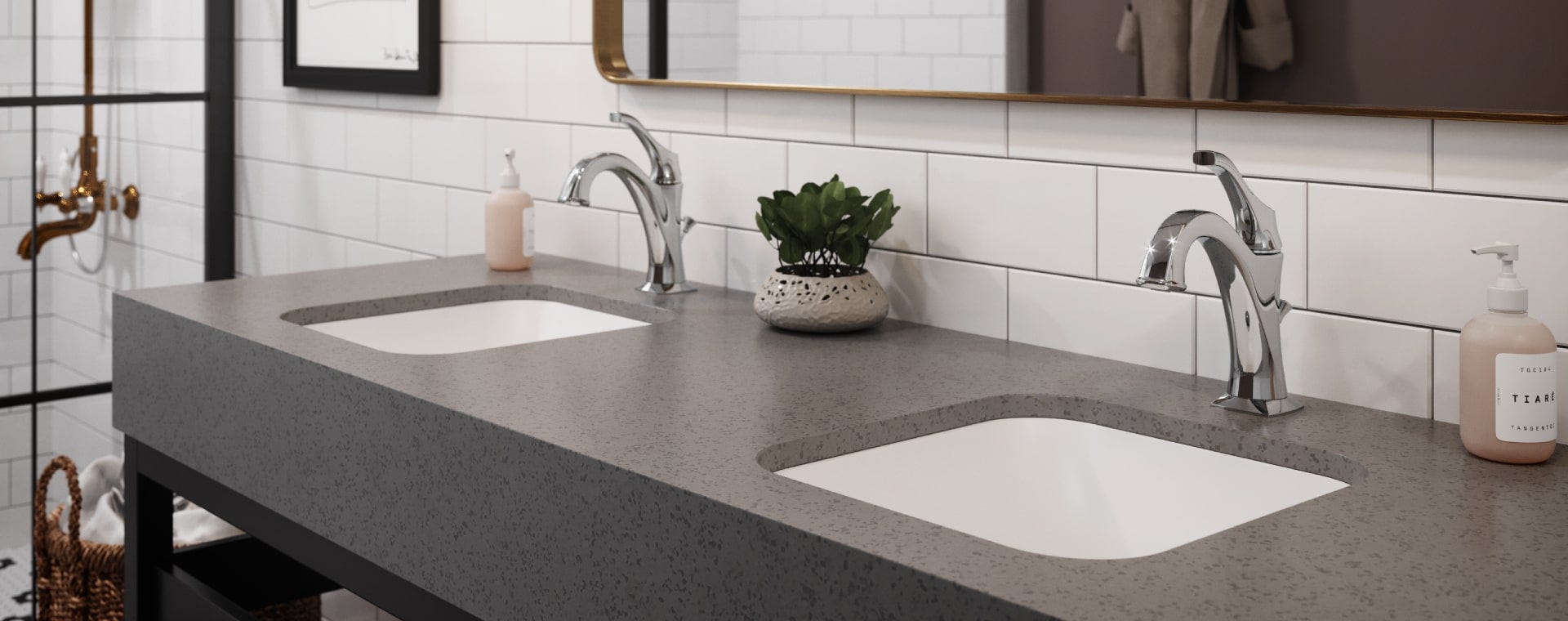When it comes to choosing the right material for your kitchen and bath, durability is a key factor to consider. Both soapstone and marble are popular options, but which one is more durable? Let's take a closer look. Soapstone: This natural stone is known for its durability, making it a great choice for high-traffic areas like kitchens and bathrooms. It is a non-porous material, which means it is resistant to stains, bacteria, and water damage. It is also heat-resistant, making it perfect for use in kitchens where hot pots and pans are regularly placed on countertops. Marble: While marble is also a durable material, it is not as resistant to scratches and stains as soapstone. It is a porous material, which means it can be prone to staining and etching from acidic substances. However, with proper sealing and regular maintenance, marble can still last for many years in a kitchen or bathroom setting.1. Durability Comparison: Soapstone vs Marble for Kitchen and Bath
The cost of materials is an important factor to consider when planning a kitchen or bathroom renovation. Let's compare the cost of soapstone and marble to help you make an informed decision. Soapstone: On average, soapstone is slightly more expensive than marble, with prices ranging from $70 to $120 per square foot. However, this cost may vary depending on the quality and thickness of the stone. Marble: Marble is generally less expensive than soapstone, with prices ranging from $50 to $100 per square foot. However, high-end marble can be more expensive, as it often comes in unique and rare patterns.2. Cost Comparison: Soapstone vs Marble for Kitchen and Bath
Proper maintenance is essential for keeping your kitchen and bathroom looking beautiful for years to come. Let's see how soapstone and marble compare in terms of maintenance. Soapstone: As a non-porous material, soapstone is easy to maintain. It does not require sealing, and regular cleaning with mild soap and water is sufficient to keep it looking its best. However, it is recommended to oil the soapstone occasionally to enhance its natural color and protect it from scratches. Marble: Marble is a porous material, which means it requires regular sealing to protect it from stains and etching. It is also more prone to scratching, so it is important to use cutting boards and avoid placing hot objects directly on the surface. Regular cleaning with a pH-neutral cleaner is also recommended to prevent damage to the marble's surface.3. Maintenance Comparison: Soapstone vs Marble for Kitchen and Bath
Both soapstone and marble are known for their heat resistance, making them popular choices for kitchen countertops. But which one is more heat resistant? Soapstone: Soapstone is an excellent heat conductor, which means it can withstand high temperatures without cracking. This makes it the ideal choice for use in kitchen and bathroom settings where hot objects are frequently placed on countertops. Marble: While marble is also heat resistant, it is not as good a conductor as soapstone. It can withstand moderate heat, but it is not recommended to place hot objects directly on the surface for extended periods.4. Heat Resistance Comparison: Soapstone vs Marble for Kitchen and Bath
Stain resistance is a crucial factor to consider when choosing a material for your kitchen and bath. Let's see how soapstone and marble compare in terms of stain resistance. Soapstone: As a non-porous material, soapstone is highly resistant to stains. It does not absorb liquids, preventing stains from setting in. This makes it an excellent choice for use in kitchens and bathrooms where spills are common. Marble: Marble is a porous material, which means it is susceptible to staining. It is important to seal marble regularly to protect it from stains, especially in high-traffic areas like the kitchen and bathroom.5. Stain Resistance Comparison: Soapstone vs Marble for Kitchen and Bath
When it comes to design, both soapstone and marble offer a variety of options to suit different styles and preferences. Soapstone: Soapstone comes in a range of colors, from light gray to dark black, with unique veining patterns. Some soapstone may also have green or blue undertones, giving it a more unique and organic look. It is a versatile material that can be honed or polished to achieve different finishes. Marble: Marble is known for its elegant and luxurious appearance, with its signature white background and veins in various colors like gray, blue, and gold. Each marble slab is unique, making it a popular choice for those who want a one-of-a-kind look in their kitchen or bathroom.6. Design Options: Soapstone vs Marble for Kitchen and Bath
With sustainability becoming increasingly important, it is essential to consider the environmental impact of the materials you choose for your kitchen and bath. Let's see how soapstone and marble compare in this aspect. Soapstone: Soapstone is a natural material that is sustainably sourced, making it an environmentally friendly choice. It is also a long-lasting material, reducing the need for frequent replacements, which can have a significant impact on the environment. Marble: Marble is also a natural material, but it requires more energy and resources to extract and process, making it less environmentally friendly. However, some marble suppliers offer sustainable and eco-friendly options, so it is important to do your research before making a decision.7. Environmental Impact: Soapstone vs Marble for Kitchen and Bath
The installation process for soapstone and marble is similar, but there are some differences to consider. Soapstone: Soapstone is a dense and heavy material, which means it can be more challenging to work with during installation. It also requires skilled professionals to cut and install the stone correctly, adding to the installation cost. Marble: Marble is also a dense and heavy material, but it is slightly easier to work with during installation compared to soapstone. However, like soapstone, it is recommended to hire skilled professionals for the installation to ensure a proper and seamless fit.8. Installation Comparison: Soapstone vs Marble for Kitchen and Bath
Investing in high-quality, long-lasting materials is essential for any kitchen or bathroom renovation. Let's see how soapstone and marble compare in terms of longevity. Soapstone: With proper care and maintenance, soapstone can last for decades without showing signs of wear and tear. It is a durable and hard-wearing material that can withstand daily use in a kitchen or bathroom setting. Marble: Marble is also a long-lasting material, but it may require more frequent sealing and maintenance to keep it looking its best. With proper care, it can last for many years in a kitchen or bathroom.9. Longevity Comparison: Soapstone vs Marble for Kitchen and Bath
Regular maintenance is essential for keeping your kitchen and bathroom looking beautiful. Let's compare the maintenance requirements for soapstone and marble. Soapstone: As mentioned earlier, soapstone is a low-maintenance material that only requires occasional oiling and regular cleaning with mild soap and water. This makes it a popular choice for busy homeowners who don't have a lot of time for maintenance. Marble: Marble, on the other hand, requires more frequent maintenance, including sealing and regular cleaning with a pH-neutral cleaner. It is also recommended to avoid using harsh chemicals and abrasive cleaning tools on marble to prevent damage to the surface. After comparing soapstone and marble in terms of durability, cost, maintenance, and other factors, it is clear that both materials have their pros and cons. Ultimately, the right choice for your kitchen and bath will depend on your personal preferences and needs. Consider your lifestyle, budget, and design aesthetic to make the best decision for your home. Whichever material you choose, both soapstone and marble are timeless and beautiful options that will enhance the look and functionality of your kitchen and bath for years to come.10. Maintenance Comparison: Soapstone vs Marble for Kitchen and Bath
The Benefits of Choosing Soapstone for Your Kitchen and Marble for Your Bath

Soapstone: A Durable and Versatile Choice for Your Kitchen
 When it comes to choosing the right materials for your kitchen, durability and versatility are key factors to consider. This is where soapstone shines.
Soapstone
is a natural stone that is composed of talc, magnesite, and dolomite. It has been used for centuries as a building material and is known for its durability and heat resistance. This makes it a perfect choice for kitchen countertops, as it can withstand hot pots and pans without being damaged. In addition, soapstone is non-porous, which means it is resistant to stains and bacteria. This makes it a hygienic option for food preparation areas in the kitchen.
Aside from its practical benefits, soapstone also adds a touch of elegance and beauty to any kitchen. Its natural veining and varying shades of grey give it a unique and timeless look. It is also a low-maintenance material, requiring only occasional oiling to maintain its luster.
Soapstone
is also a sustainable choice, as it is a natural resource that is mined and does not require any chemicals or harmful substances for its production. It is a durable and eco-friendly option that will last for many years to come.
When it comes to choosing the right materials for your kitchen, durability and versatility are key factors to consider. This is where soapstone shines.
Soapstone
is a natural stone that is composed of talc, magnesite, and dolomite. It has been used for centuries as a building material and is known for its durability and heat resistance. This makes it a perfect choice for kitchen countertops, as it can withstand hot pots and pans without being damaged. In addition, soapstone is non-porous, which means it is resistant to stains and bacteria. This makes it a hygienic option for food preparation areas in the kitchen.
Aside from its practical benefits, soapstone also adds a touch of elegance and beauty to any kitchen. Its natural veining and varying shades of grey give it a unique and timeless look. It is also a low-maintenance material, requiring only occasional oiling to maintain its luster.
Soapstone
is also a sustainable choice, as it is a natural resource that is mined and does not require any chemicals or harmful substances for its production. It is a durable and eco-friendly option that will last for many years to come.
Marble: A Luxurious and Beautiful Addition to Your Bath
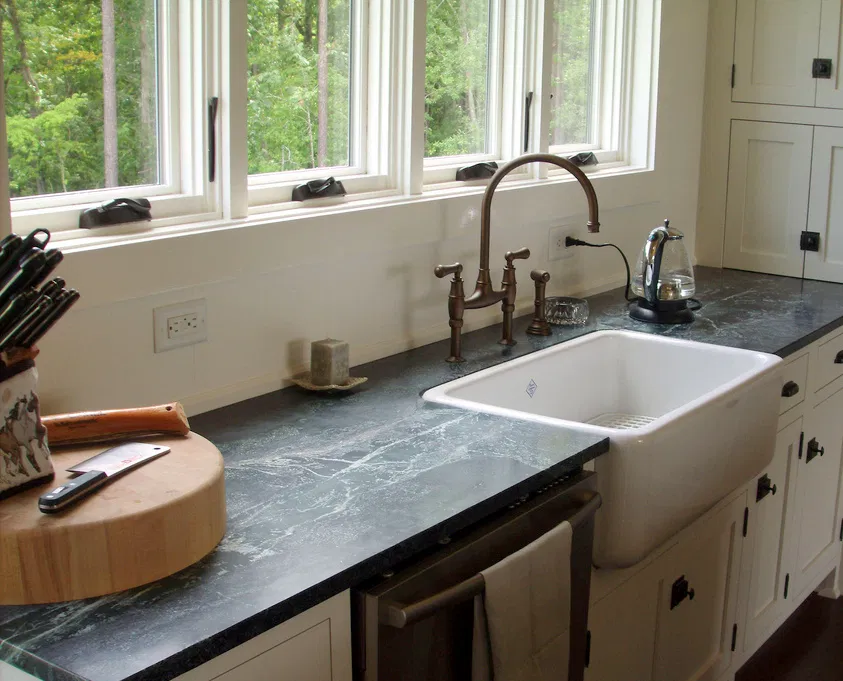 When it comes to designing a luxurious and elegant bathroom, marble is often the top choice.
Marble
is a natural stone that is formed from limestone under high pressure and heat. It is known for its stunning and distinctive veining, which adds a touch of sophistication and opulence to any space. Its timeless beauty has been used in architecture and design for centuries, making it a classic and enduring choice for bathroom design.
In addition to its aesthetic appeal, marble is a durable and water-resistant material, making it perfect for bathrooms. It is also relatively easy to clean and maintain, requiring only mild soap and water. However, it is important to note that marble is a porous material and can be susceptible to staining, so it is recommended to seal it regularly to protect its surface.
Furthermore,
marble
comes in a variety of colors and patterns, giving you the opportunity to create a truly unique and personalized bathroom. From classic white Carrara marble to bold and dramatic black marble, there is a
marble
option to suit every design style and preference.
When it comes to designing a luxurious and elegant bathroom, marble is often the top choice.
Marble
is a natural stone that is formed from limestone under high pressure and heat. It is known for its stunning and distinctive veining, which adds a touch of sophistication and opulence to any space. Its timeless beauty has been used in architecture and design for centuries, making it a classic and enduring choice for bathroom design.
In addition to its aesthetic appeal, marble is a durable and water-resistant material, making it perfect for bathrooms. It is also relatively easy to clean and maintain, requiring only mild soap and water. However, it is important to note that marble is a porous material and can be susceptible to staining, so it is recommended to seal it regularly to protect its surface.
Furthermore,
marble
comes in a variety of colors and patterns, giving you the opportunity to create a truly unique and personalized bathroom. From classic white Carrara marble to bold and dramatic black marble, there is a
marble
option to suit every design style and preference.
Which One Should You Choose?
 Both
soapstone
and
marble
have their own unique characteristics and benefits, making them excellent choices for kitchen and bath design. Ultimately, the decision will depend on your personal preferences and the specific needs of your space. If you are looking for a durable and low-maintenance option for your kitchen, soapstone may be the way to go. However, if you want to add a touch of luxury and elegance to your bathroom, marble is the ideal choice. Whichever one you choose, both soapstone and marble will add value and beauty to your home for years to come.
Both
soapstone
and
marble
have their own unique characteristics and benefits, making them excellent choices for kitchen and bath design. Ultimately, the decision will depend on your personal preferences and the specific needs of your space. If you are looking for a durable and low-maintenance option for your kitchen, soapstone may be the way to go. However, if you want to add a touch of luxury and elegance to your bathroom, marble is the ideal choice. Whichever one you choose, both soapstone and marble will add value and beauty to your home for years to come.




